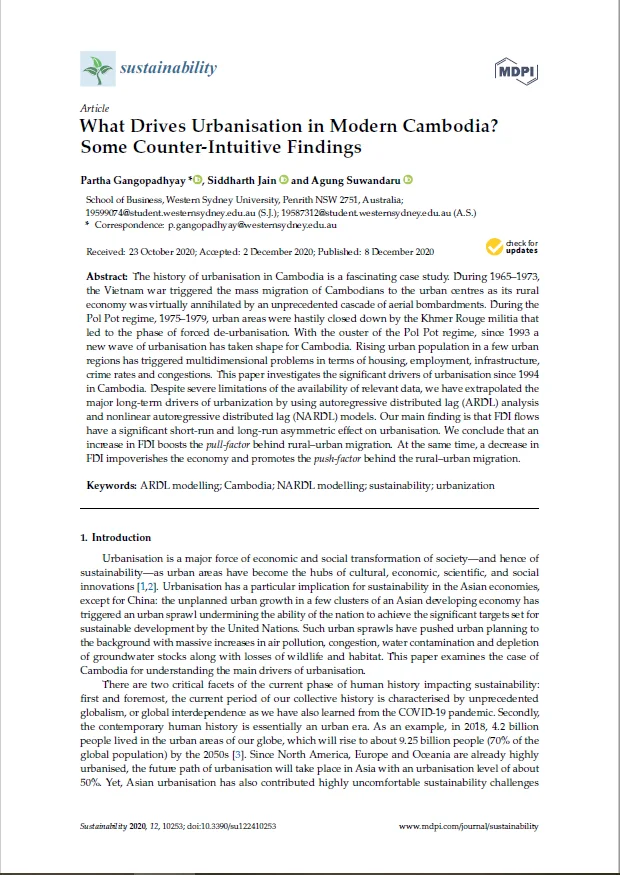
This paper investigates the significant drivers of urbanisation since 1994 in Cambodia. Despite severe limitations of the availability of relevant data, we have extrapolated the major long-term drivers of urbanization by using autoregressive distributed lag (ARDL) analysis and nonlinear autoregressive distributed lag (NARDL) models. Our main finding is that FDI flows have a significant short-run and long-run asymmetric effect on urbanisation. We conclude that an increase in FDI boosts the pull-factor behind rural–urban migration. At the same time, a decrease in FDI impoverishes the economy and promotes the push-factor behind the rural–urban migration.